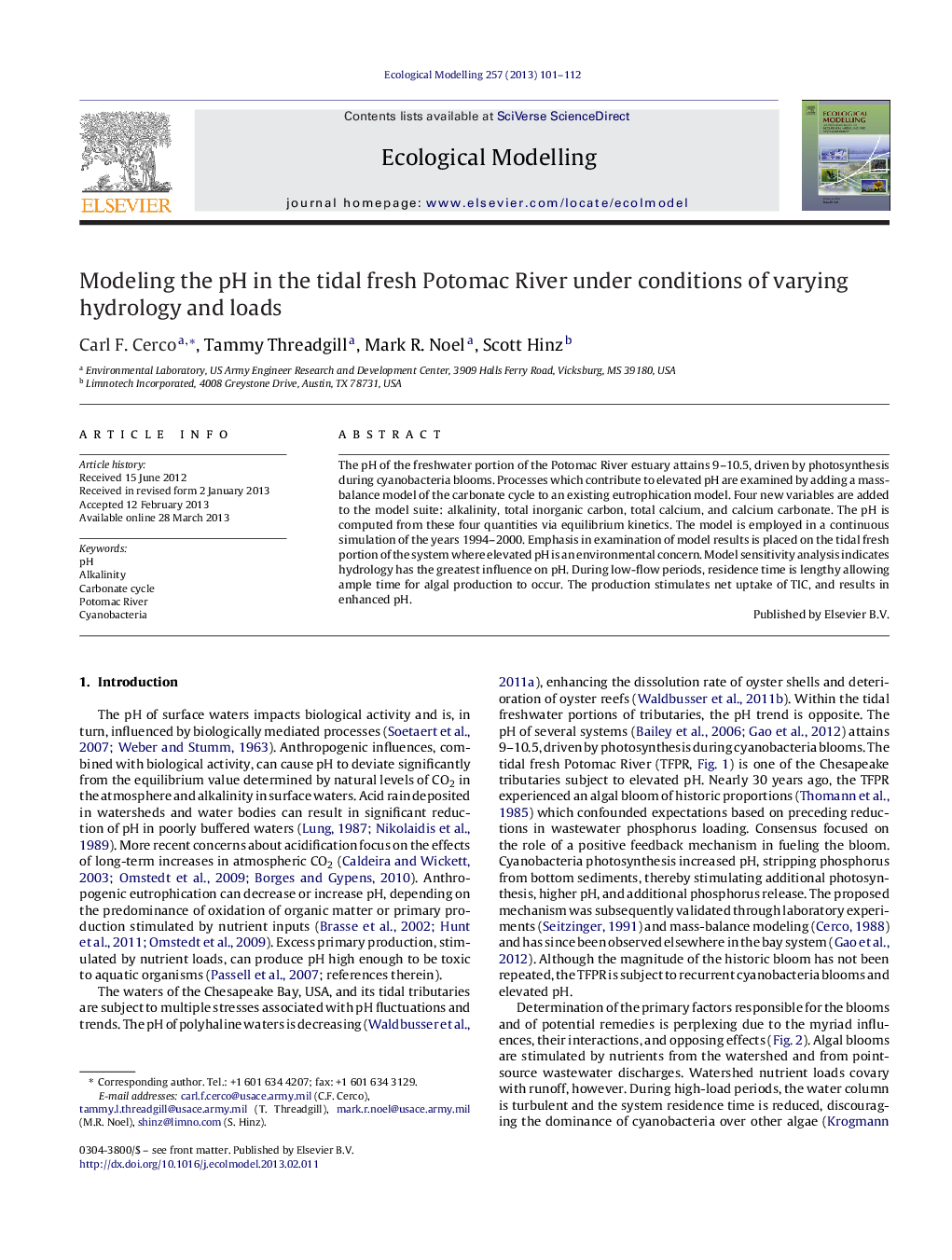| Article ID | Journal | Published Year | Pages | File Type |
|---|---|---|---|---|
| 4376132 | Ecological Modelling | 2013 | 12 Pages |
The pH of the freshwater portion of the Potomac River estuary attains 9–10.5, driven by photosynthesis during cyanobacteria blooms. Processes which contribute to elevated pH are examined by adding a mass-balance model of the carbonate cycle to an existing eutrophication model. Four new variables are added to the model suite: alkalinity, total inorganic carbon, total calcium, and calcium carbonate. The pH is computed from these four quantities via equilibrium kinetics. The model is employed in a continuous simulation of the years 1994–2000. Emphasis in examination of model results is placed on the tidal fresh portion of the system where elevated pH is an environmental concern. Model sensitivity analysis indicates hydrology has the greatest influence on pH. During low-flow periods, residence time is lengthy allowing ample time for algal production to occur. The production stimulates net uptake of TIC, and results in enhanced pH.
► A mass-balance model of the carbonate cycle is added to a eutrophication model. ► The model is applied to a tidal freshwater system plagued by algal blooms, the Potomac River, USA. ► Sensitivity analysis shows hydrology is the most significant determinant of pH in this system.
